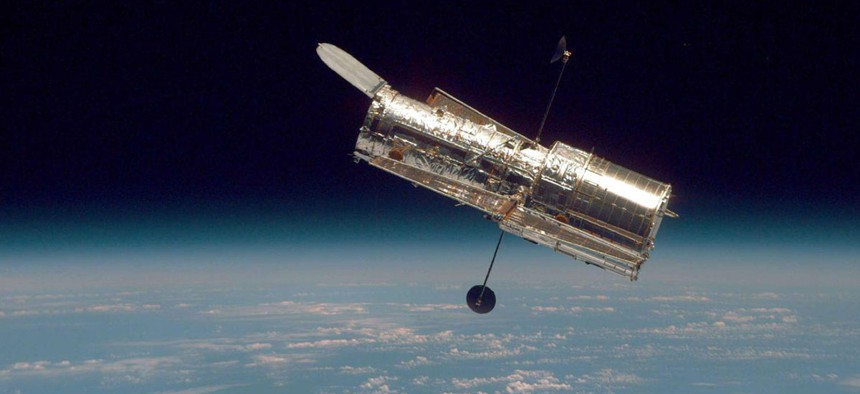
NASA file photo
The Hubble Telescope May Need a Reboot After a Tough Weekend
NASA confirmed that the telescope was in “safe mode” after one of its six gyroscopes failed
It was a “very stressful weekend” for the Hubble telescope, according to astronomer Rachel Osten, the telescope’s deputy mission head.
It’s true. Very stressful weekend. Right now HST is in safe mode while we figure out what to do. Another gyro failed. First step is try to bring back the last gyro, which had been off, and is being problematic.
— Dr. Rachel Osten (@rachelosten) October 8, 2018
In a tweet on Monday, Osten confirmed that the telescope was in “safe mode” after one of its six gyroscopes—devices that contain spinning wheels which help stabilize the device and aim it at subjects of interest—failed. (You can see these gyroscopes extending from the the main body of the telescope in the picture above.) According to NASA, safe mode puts Hubble in a “stable configuration” until ground control can correct the issue.
Hubble only needs three of its six gyroscopes to function optimally. It can, however, provide a limited view of the skies with two, and according to the New York Times, “even one gyroscope will do in a pinch.”
Gyroscopes have failed before. Between 2005 and 2009, the telescope operated with only two, leading up to a 2009 repair mission during which it got six new ones. Two of those had already died when the third failed on Friday.
The death of this one was not entirely surprising. “The gyro that failed had been exhibiting end-of-life behavior for approximately a year, and its failure was not unexpected,” NASA stated in a release on Monday. “The remaining three gyros available for use are technically enhanced and therefore expected to have significantly longer operational lives.”
Two of the “enhanced” gyroscopes are already operating. But Ken Sembach, director of the Space Telescope Science Institute, which operates the telescope, told the New York Times that when ground control attempted to fire up a backup gyroscope, Hubble sent garbled messages back to Earth, which means the gyroscope may require rebooting. “We don’t want to start flipping switches until we understand what’s happening,” Sembach told the Times.
NASA said Hubble’s scientific operations are suspended until a review board can determine the problem with the gyroscope. If they find the problematic gyroscope unusable, Hubble will operate with a single one—a mode that offers less coverage of the sky, but, NASA says, has a “relatively limited impact on the overall scientific capabilities.”






